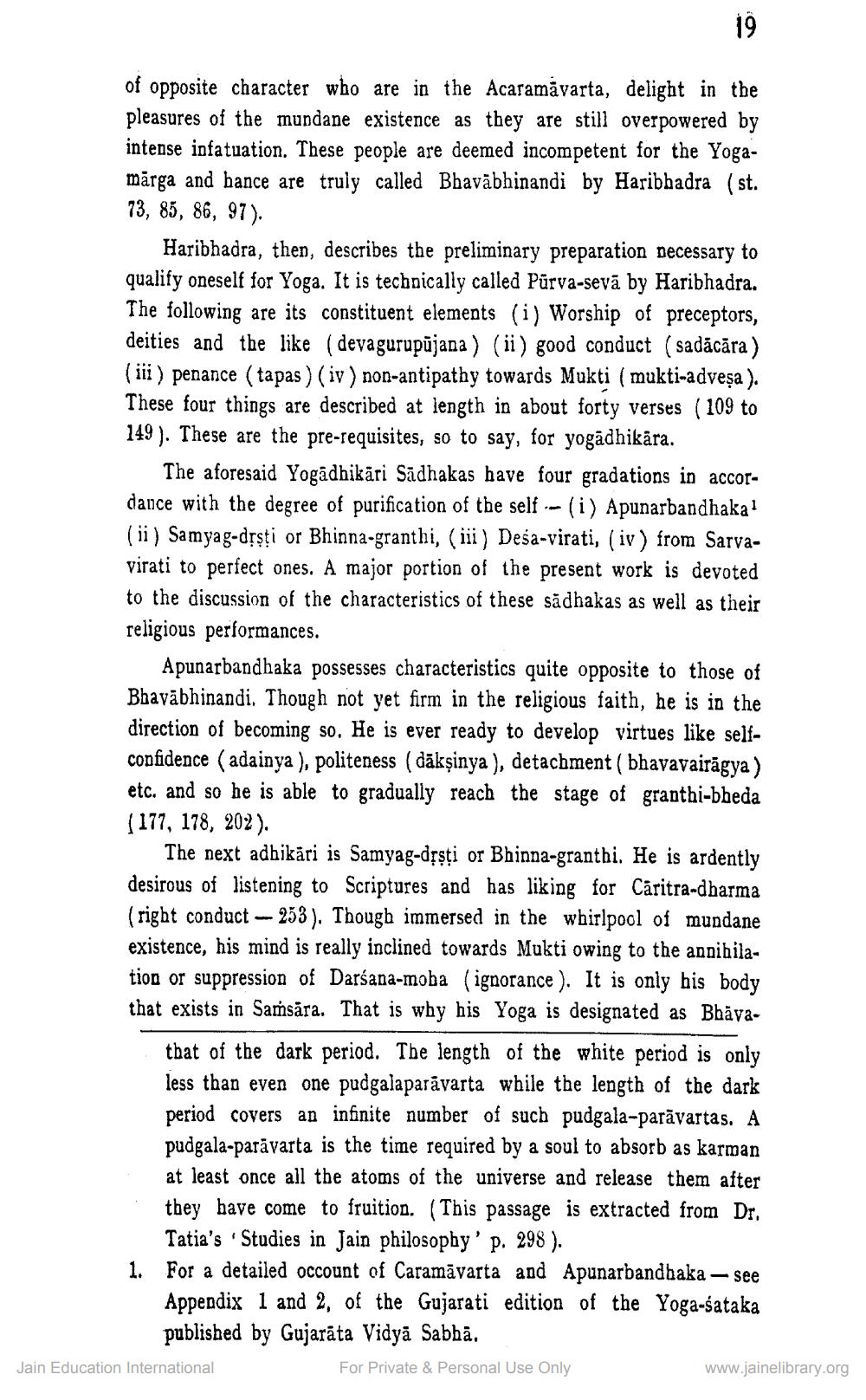________________
19
of opposite character who are in the Acaramávarta, delight in the pleasures of the mundane existence as they are still overpowered by intense infatuation. These people are deemed incompetent for the Yogamärga and bance are truly called Bhavābhinandi by Haribhadra (st. 73, 85, 86, 97).
Haribhadra, then, describes the preliminary preparation necessary to qualify oneself for Yoga. It is technically called Pūrva-sevā by Haribhadra. The following are its constituent elements (i) Worship of preceptors, deities and the like (devagurupājana) (ii) good conduct (sadācāra) (iii) penance (tapas) (iv) non-antipathy towards Mukti (mukti-adveşa ). These four things are described at length in about forty verses (109 to 149). These are the pre-requisites, so to say, for yogādhikära.
The aforesaid Yogādhikāri Sādhakas have four gradations in accordance with the degree of purification of the self -- (i) Apunarbandhakal (ii) Samyag-drșți or Bhinna-granthi, (iii) Deša-virati, (iv) from Sarvavirati to perfect ones. A major portion of the present work is devoted to the discussion of the characteristics of these sădhakas as well as their religious performances.
Apunarbandhaka possesses characteristics quite opposite to those of Bhavābhinandi. Though not yet firm in the religious faith, he is in the direction of becoming so. He is ever ready to develop virtues like selfconfidence (adainya ), politeness (dākṣinya ), detachment (bhavavairāgya ) etc. and so he is able to gradually reach the stage of granthi-bheda (177, 178, 202).
The next adhikäri is Samyag-dęsti or Bhinna-granthi. He is ardently desirous of listening to Scriptures and has liking for Caritra-dharma (right conduct -- 253). Though immersed in the whirlpool of mundane existence, his mind is really inclined towards Mukti owing to the annihilation or suppression of Darśana-moba (ignorance ). It is only his body that exists in Samsára. That is why his Yoga is designated as Bhāya.
that of the dark period. The length of the white period is only less than even one pudgalaparávarta while the length of the dark period covers an infinite number of such pudgala-parāvartas. A pudgala-parāvarta is the time required by a soul to absorb as karman at least once all the atoms of the universe and release them after they have come to fruition. (This passage is extracted from Dr.
Tatia's Studies in Jain philosopby' p. 298 ). 1. For a detailed occount of Caramāyarta and Apunarbandhaka - see
Appendix 1 and 2, of the Gujarati edition of the Yoga-śataka
published by Gujarāta Vidyā Sabhā. Jain Education International For Private & Personal Use Only
www.jainelibrary.org




